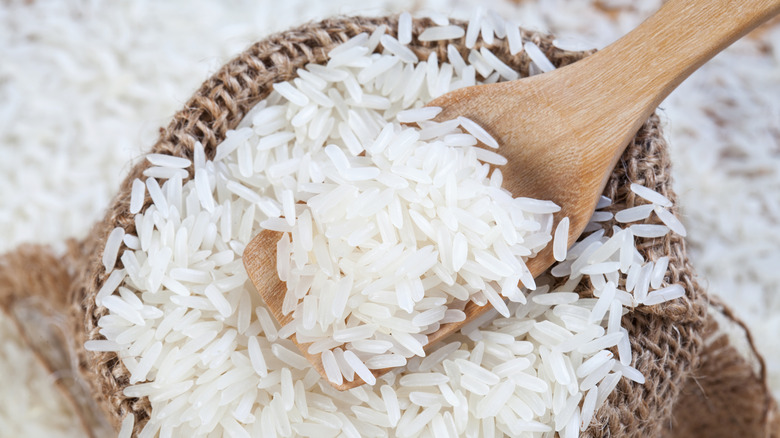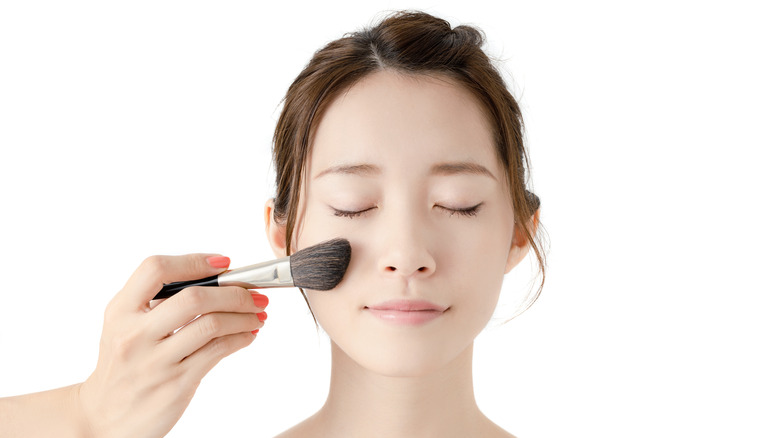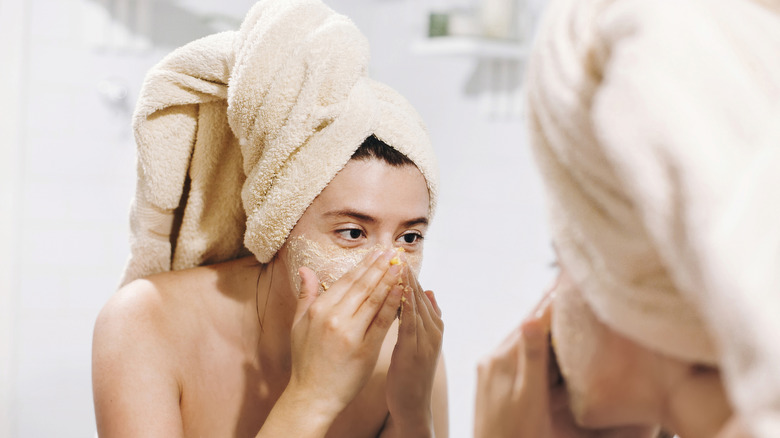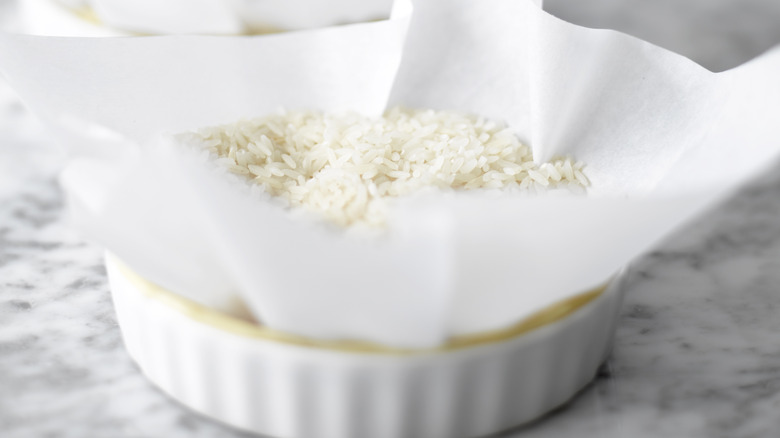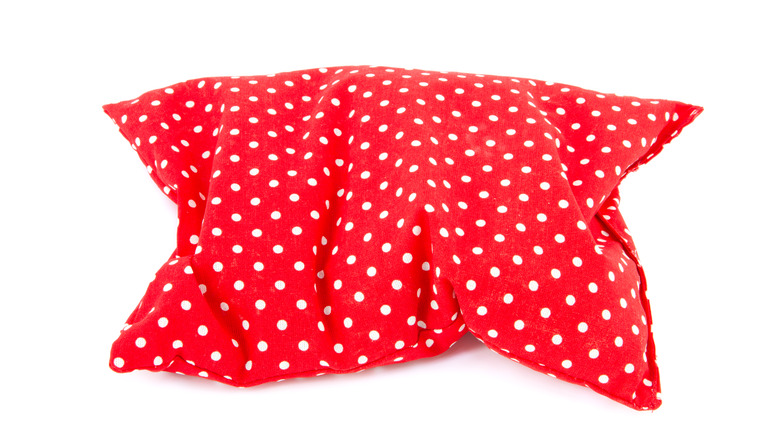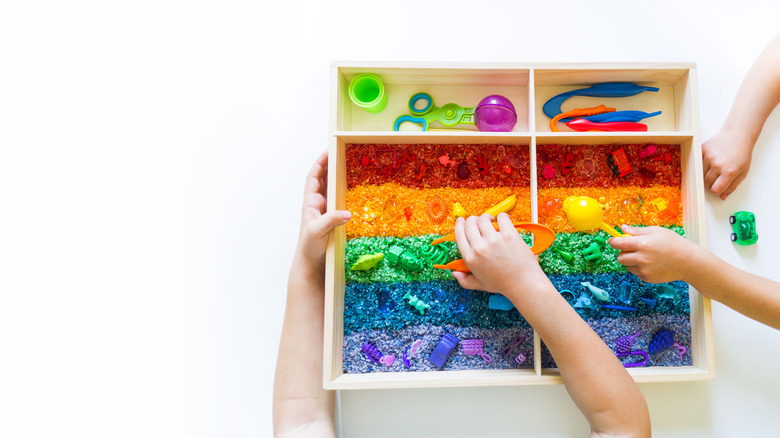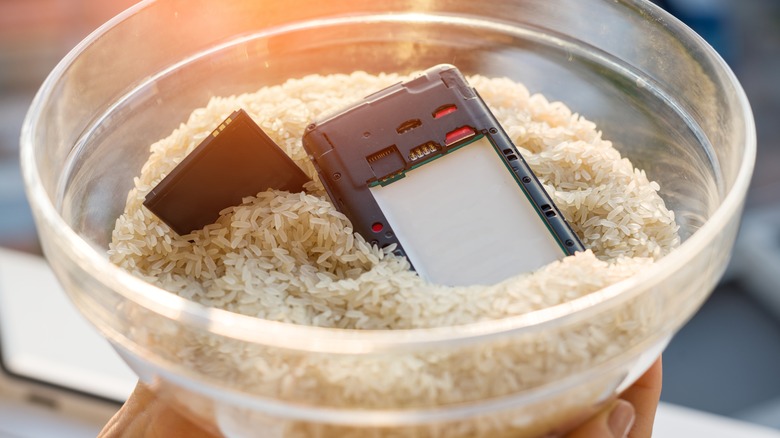Smart Uses For Rice You've Never Thought Of
If you're not from one of the many cultures where rice is a staple, you may take this starch for granted. Even if you don't eat rice every day, though, you still probably have a bag or two in the pantry, since rice is a must-have ingredient for stir-fries, rice bowls, Chipotle-style burritos, and a thousand other main dishes that just need a little starch on the side. Rice also shines in the spotlight as the star ingredient in dishes such as risotto, rice pudding, and rice pie (this last-named is an Italian dish described in She Loves Biscotti). Still, rice on its own is admittedly not the most exciting of foodstuffs, as it gets its flavoring from whatever other ingredients it's cooked with.
What you may not know about rice, though, is that it has a secret life outside the pantry, making itself useful in many ways that have nothing to do with being a foodstuff. Rice can help your skin glow, your pie crusts come out perfect, and maybe even rescue your expensive electronics.
Raw rice can be used to make a DIY face powder
Rice-based cosmetics are very popular in Japan, and for good reason as rice powder used as a skincare ingredient can give your skin a totally natural-looking glow. The Urban Beauty Spot blog says you can make your own rice powder by grinding raw rice in the blender. It's best to do this in short spurts since grinding rice is a tough job for a blender and can tend to overheat the motor. As a tip, they recommend putting your rice in the freezer for 30 minutes before you blend it.
Once you have your rice powder, what do you do with it? You can use it as-is as a face powder, or use it to make a DIY face mask by blending it with a little squirt of honey and enough milk to make a thick paste. Apply the mixture to your face, then let the mask sit for 15 minutes before rinsing with warm water. This rice mask can help tighten pores, gently exfoliate skin, and absorb excess oil.
Cooked rice is also great for your skin
Not just rice powder, but rice water, is something that many beauty blogs tout as a hair rinse, although it also makes for a great face toner. The Blog Stuff provides a recipe for how to make your own rice water skin toner but goes one better by also explaining what you can do with the parboiled rice you'll have left over. To make the rice water, either boil one part rice in 3 part water for 5 minutes or just allow the rice to soak without cooking for a few hours. Strain out half a cup of water and there's your toner (or hair rinse).
Don't pour off the rest of the water! Instead, cook the rice until it is soft but not all of the water has absorbed. You'll want something you can puree since this is the next step. Strain your pureed rice through cheesecloth or a fine mesh strainer –- the gel-like semi-liquid that comes out makes a great face mask, alone or with added ingredients like vitamin E or rosehip oil. The rice that is left in the strainer can also be used to make a face scrub. For every two tablespoons of cooked rice, mix in two tablespoons of olive oil, one tablespoon of almond oil, and the contents of a chamomile or green tea bag. Moisten your face, then use this mixture as a gentle cleansing scrub.
Use rice for blind baking
Blind baking may sound like some kind of difficult or downright dangerous challenge that Gordon Ramsay might expect his chefs to perform on "Hell's Kitchen," but it actually just means cooking a pie crust before you put the filling in. This is something you might do if you were making, say, a pudding pie or an ice cream pie with a pastry crust.
If you just put an empty pie crust or pastry shell in the oven by itself, though, it might bubble up or lose its shape. In order to counteract this, you need to fill the shell with some type of weight that will prevent this from happening. There are such things as dedicated pie weights, and some people use dried beans (via The Kitchn) but one of the cheapest and most readily available materials for blind baking is a few handfuls of raw rice. Just sprinkle the rice evenly over the pie crust, then you're all cleared to bake.
PureWow notes that rice that's been baked can not then be cooked and eaten, but you can either use it over and over to bake with or you could try using it for one of the aforementioned cosmetic preparations.
Use rice to make a soothing heating or cold pack
If you ever get sore muscles or cramps or a tension headache, you know what a relief it can be to have a heating pad or a cold pack on hand. You might also have used a scented lavender pillow to help you drift off to sleep. If you're at all crafty and know your way around a sewing machine or don't mind sewing by hand, you can easily make your own thermal pillow.
A tutorial from Homestead and Chill shows how you can repurpose an old pillowcase to make a rice-filled pillow. Cut the pillowcase to make a fabric "envelope" measuring about 12" wide and 20" long, then sew seams up the middle to divide the envelope into four pockets. Fill these pockets with rice (it should take about 2 ½ cups per pocket, add essential oils if desired, or dried lavender buds if this is going to be a sleep pillow. Sew the pockets closed, then you'll have a handy pad that can be heated in the microwave or placed in the freezer to turn it into a "chillow."
Rice is great for arts and crafts
Using rice to stuff pillows is only the beginning when it comes to crafting. Rice is a must-have for any pre-K or kindergarten arts and crafts session. Rainbow-dyed rice can make for an excellent sensory experience, and raw rice can be used to fill cans, plastic bottles, cardboard tubes or paper bags to make maracas, rain sticks, and similar noisemakers. Rice can also be used to make stuffed toys, and Fun Family Crafts suggests using it to stuff balloons to turn them into "bean" bags. You can also use dyed rice to create textured pictures or fill jars with layers of dyed rice to make for a less-messy alternative to sand art.
Better Homes and Gardens also suggests an interesting way to "dry-dye" Easter eggs: fill cups or baggies with rice, add a few drops of food coloring, then stir to mix. Once the rice absorbs the dye, drop in a hard-boiled egg and shake, shake, shake until you have a brightly-colored speckled egg.
Rice can even revive wet electronics
Does your cell phone have a removable battery? Not too many of them do anymore, which is too bad since it's awesome to be able to swap out a dead battery for a fully charged one without having to tether yourself to a charger. Another great thing about removable battery phones, though, is that you may be able to save them from certain doom if they ever get dunked. Popular Mechanics says that even a soaked phone may be salvageable if you open up the phone, remove the battery, dry out the insides as best you can with a soft cloth, then bury the phone in a bowl of rice. The reason this works is because rice acts as a desiccant, meaning it absorbs moisture. While silica gel is the most effective desiccant, who's got that stuff on hand? Popular Mechanics does note, though, that instant rice works better than plain raw rice.
Phones aren't the only type of electronic gadget that can be saved by everyone's favorite DIY desiccant. Greentree Audiology recommends that wet hearing aids can be revived by placing these in a bowl of rice, again taking the battery out first since wet batteries corrode quickly. With a new battery, though, rice-dried heating aids should be good to go in about 24 hours.
